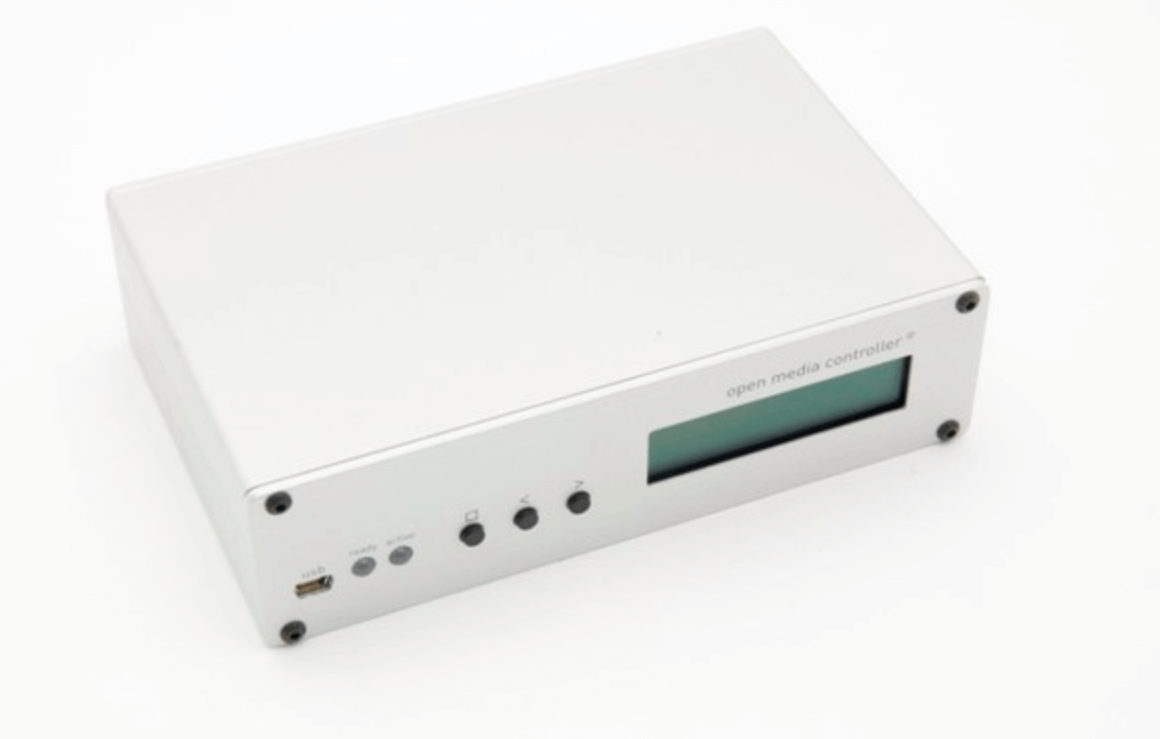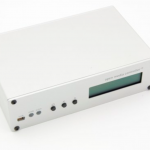
introduction
iart interactive have been using media controllers since the very beginning of their existence, throughout their lifespan constantly developing more advanced solutions. By taking all the learnings and features from previous controllers they have now developed the first professional open source media controller (OMC) and are ready to offer this product to the public.This media controller is a professional open-source computing platform and environment. It has a similar background to the highly popular Arduino tool, built on two components: hardware and online platform. It is based on a media board and acts as a controller for developing interactive projects in a simple programming environment. The similarity to the Arduino product also gives it the compatibility, which means that the same coding, shields and large community can be used.The Open Media Controller is for everyone that creates interactive solutions and wants to be more secure with the product that brings the project to life in a professional and safe surrounding. The OMC is CE certified, has a secure housing, more built-in features than any comparable product, adaptable to customer requirements and has been created by a company that uses and needs exactly these kinds of products in their everyday business.There are two standard versions of the Open Media Controller, the basic plug and play model with a smaller housing and only one DMX-plug and the advanced version with a larger housing, a display, two DMX-plugs and customisable back panel for optional shields. Both models already come with a high level of features including Micro SD, WLAN module socket, Bluetooth module socket, power supply, real time clock, and external functional buttons.iart interactive also offer a shield design service, which is very flexible and any shield can be created in the shortest of periods.
features


 MCU
MCU- ATmega2560
- 256 KBytes of In-System Self-Programmable Flash
- 4 KBytes EEPROM
- 8 KBytes Internal SRAM
- 16 MHz clock frequency
- ATmega8U2
- 8 KBytes of In-System Self-Programmable Flash
- 512 Bytes EEPROM
- 512 Bytes Internal SRAM
- 16 MHz clock frequency
- USB 2.0 Full-speed Device Module
- 9-24V DC
- max. 3A
- EMI protected
- Ethernet
- Support Hardwired TCP/IP Protocols : TCP, UDP, ICMP, IPv4 ARP, IGMP, PPPoE, Ethernet
- 10BaseT/100BaseTX Ethernet PHY embedded
- Auto Negotiation (Full-duplex and half duplex)
- 4 independent sockets simultaneously
- Link and Speed LEDs
- Power over ethernet module socket
- 2x standard RJ45 jack
- Half duplex DMX interface
- Sending and receiving dmx data
- RDM compatible
- optional terminating impedance (jumper)
- connected to UART1 on controller
- EMI protected (ESD 15kV/8kV)
- 3x RJ10 jack including ground, DC +5V and DC supply voltage (Vin)
- Supply voltage with short circuit (fuse) and EMI protection (ESD 15kV/8kV)
- max. current 1100mA for all sensors
- 0-5V inputs
- ADC 10Bit max 15kSps.
- alternatively digital input with interrupt or digital output with Rs = 220 Ohm
- EMI protected (LC filters and ESD 15kV/8kV for each channel)
- 20 pole pinheader
- 16 digital I/O with max. output current 20mA per channel
- Pins for supply voltage and ground
- Supply voltage with short circuit (fuse) and EMI protection (ESD 15kV/8kV)
- max. supply current 1100mA (shared with SPI/UART port)
- Series resistance Rs = 220 Ohm on all channels
- EMI protected (RC filter and ESD 15kV/8kV for each channel)
- 10 pole pinheader
- RX/TX pins of UART3
- SPI interface with UART3 in SPI-Mode
- Pins for supply voltage and ground
- Supply voltage with short circuit (fuse) and EMI protection (ESD 15kV/8kV)
- max. supply current 1100mA (shared with I/O port)
- Series resistance Rs = 120 Ohm on all channels
- optional termination on MISO/RX pin (jumper)
- EMI protected (RC filter and ESD 15kV/8kV for each channel)
- external physical reset button (pinhole)
- mini USB plug
- ATmega8U2 (programmable)
- USB 2.0 fullspeed
- 100% Arduino-compatible programming interface (USB-Serial)
- No USB Host functionality
- Controller can be powered over USB 5V (in third hierarchy)
- EMI protected (ESD 15kV/8kV)
- 2x two colour LEDs Red/Green
- 3x tactile push buttons
- programmable
- 2x 16 Pol pinheader to connect a standard 2x16 character display
- Potentiometer to adjust contrast level
- Backlight driver adjustable by PWM pin
- Standard micro SD card slot
- direct communication over SPI
- level converter on board
- 32.768 kHz crystal connected to TOSC1/TOSC2 of ATmega
- no back-up battery
- Socket to connect XBee and WiFly modules available from Digi
- modules not included
- serial communication (uart)
- possibility to update controller firmware over the air (special software and bootloader needed)
- 2x 10 pol pinheaders
- each header including 6 analog inputs, ground and supply voltage
- 10 pol pinheader
- standard atmel JTAG pinout
- with JTAG enabled some controller pins can not be used for other purpose
- standard Arduino shield socket
- extended shield socket for customized OMC shields
how to use


COMMENTS